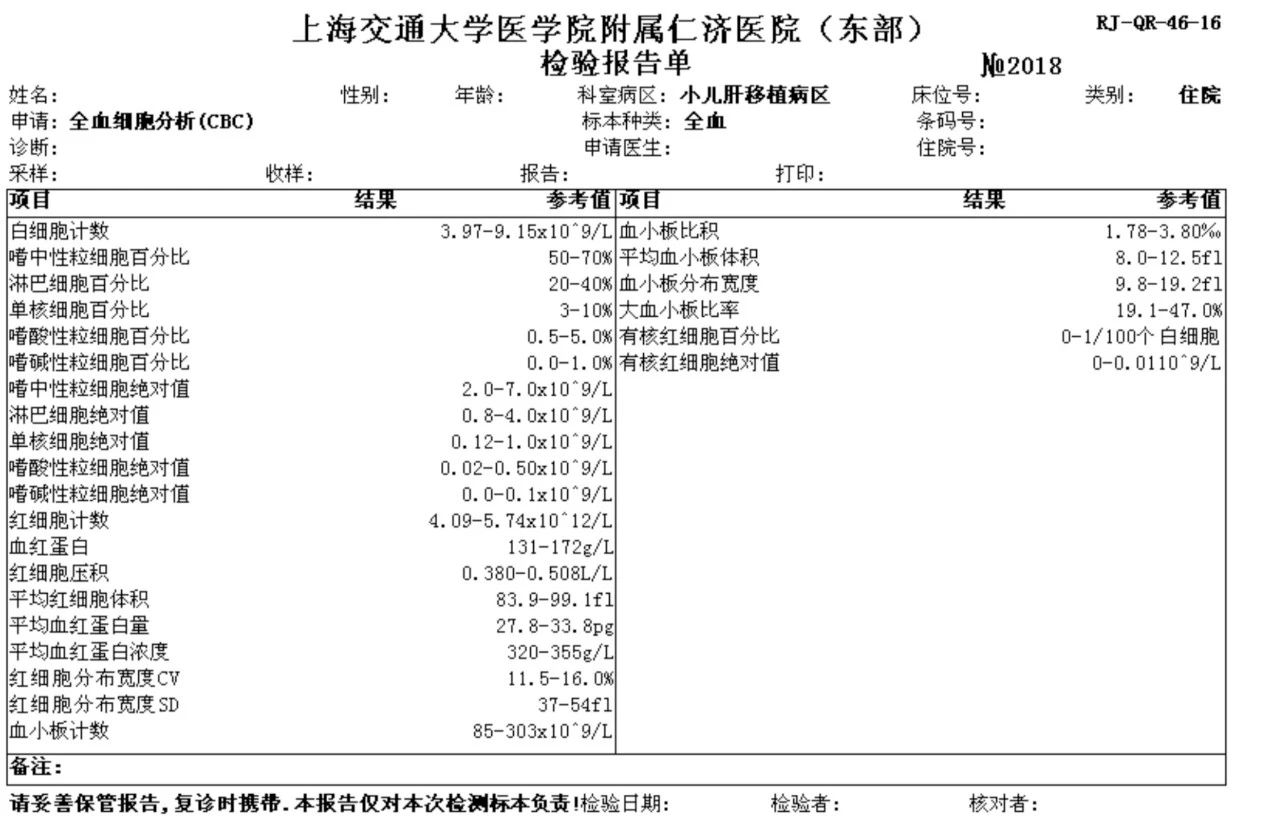Every time when parents see the arrows in the blood test results↑↓↑↑↓,
they will be on an emotional roller coaster ups and downs,just like those arrows.

They want to know their children’s health condition through these indicators
but they have no clue what they stand for
They want to know how their children are doing
but they are overwhelmed by numerous figures

Those figures are giving me a headache
In order to help more parents, having a basic understanding of blood test reports
We will have scientific popularization in the following weeks
on how to interpret blood test reports
so that parents can monitor their children’s illness in time
First, let’s take a look at
the most common blood test report
Complete blood count

Though『complete blood count』sounds very academic and fancy
it is actually more commonly known as
『routine blood test』
The routine blood test examines
the number of white blood cells, red blood cells, blood platelets
and their related parameters

You calling me?
The routine blood test is one of the most basic examinations
and can reflect many problems
It is also the first indicator that doctors will examine
White blood cells include lymphocyte, monocyte, neutrophil, eosinophil and basophil.
White blood cells
White blood cells include lymphocyte,monocyte, neutrophil,eosinophil and basophil.
White blood cell count:
↑:An important indicator of reflecting infection or blood diseases!
↓:Infection is a main factor that causes acute decrease in WBC count. Apart from that are autoimmune and blood diseases.
Absolute neutrophil count (%):
↑:Mostly seen in acute infection and severe trauma.
↓:An absolute neutrophil count < 0.5 × 10^9/L is seen in infections of gram negative bacilli, some viruses, protozoon and hyperaction of the mononuclear phagocytic system.
Absolute lymphocyte count (%):
↑:Mostly seen in virus or certain bacilli infections, posttransplant lymphoproliferative disorders (PTLD) and rejections.
↓:Usage of hormones and immunologic deficiency diseases.
Absolute monocyte count (%):
↑:Mostly seen in infections (such as infectious mononucleosis caused by the EB virus) or blood diseases.
↓:Happens in aplastic anemia and tumor involved bone marrow. Relative decrease can also be caused by hematocytosis.
Absolute eosinophils count (%):
↑:Mostly seen in allergic diseases, parasitic infections, malignant tumors, etc.
↓:Transient decrease can happen under conditions like coldness, labor, hunger and mental stimulation.
Please notice that slightly off-limit does not have much clinical significance~
Red blood cells
The red blood cell count and hemoglobin concentration are important parameters for anemia diagnosis.
Red blood cell count and hemoglobin:
↑:Severe vomiting, diarrhea, extensive burns and polyuria can lead to temporary increase. Chronic hypoxia can also increase red blood cell count.
↓:Happens in anemia caused by various reasons.
The severity of anemia can be classified by hemoglobin concentration
Mild: 90-131 g/L
Moderate: 60-90 g/L
Severe: 30-60 g/L
Extremely severe: < 30 g/L
Blood platelets
The platelet parameter includes platelet count, mean platelet volume, etc.
Platelet count:
↑:Mild or transient increase can be caused by acute hemorrhage and splenectomy.
↓:Cirrhosis, hypersplenism, splenomegaly, autoimmune and blood diseases
